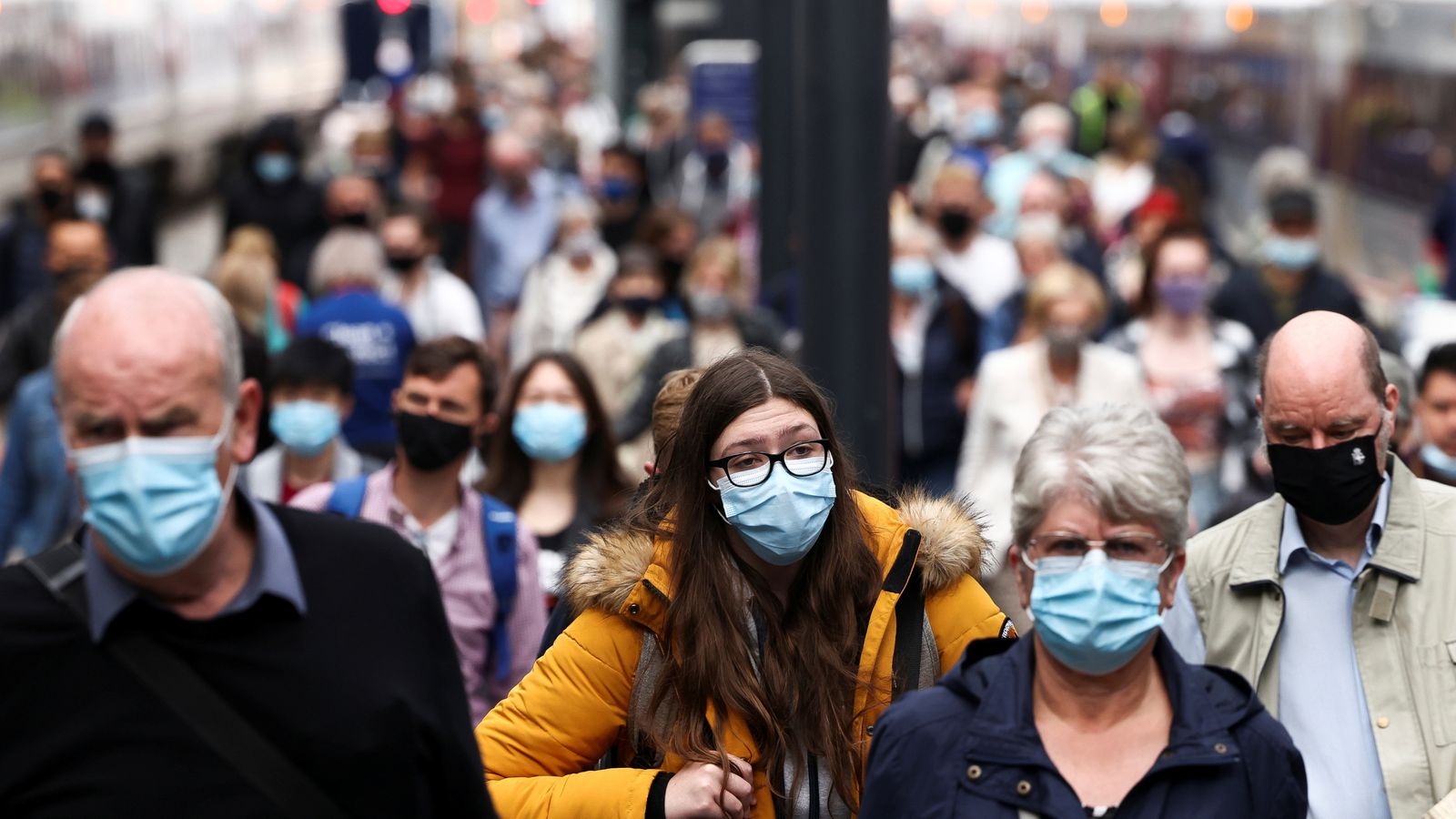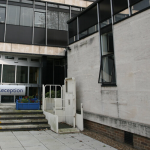Scientists have urged the government to put contingency plans in place ready for surging hospital admissions as COVID cases are set to remain high until the end of August.
Members of the government scientific advisory committee SAGE summarised the latest modelling from Warwick, Imperial, LSHTM and Juniper for easing restrictions during a 7 July meeting and have issued their latest COVID-19 advice.
Scientists approved the delayed lifting of coronavirus restrictions on 19 July, which they said has allowed more people to get vaccinated and would prevent the next wave being pushed further towards the autumn and winter.
Follow COVID-19 live updates from the UK and around the world
They said the number of hospitalisations likely to occur over the summer is uncertain, but likely to reach at least 1,000 a day, depending on the speed of changes following lockdown lifting.
The experts also suggested that the faster people return to pre-pandemic habits, the faster the next surge of infections will arise.
“It is not possible to predict how behaviours will change after 19 July,” the scientists summarised.
“The closer that behaviours are to those seen before the pandemic and the more rapidly this state is reached, the larger the resurgence will be.”
Latest SAGE summary pointers:
Maintaining interventions such as working from home, wearing masks in crowded indoor spaces and increasing ventilation would contribute to transmission reduction and therefore reduce the number of hospitalisations, they said.
SAGE also said the next peak will be considerably smaller than that of January 2021, but the prevalence of infection will remain high for at least the rest of the summer.
They said if behaviours take longer to return to pre-pandemic levels and/or if the seasonal effect of transmission is higher, the peak of the summer wave is likely to be lower, resulting in a wave that is broader.
However, the Imperial modelling led scientists to assume that in a worst-case scenario, hospitalisations and deaths in the next wave could exceed those seen in the second wave.
But they said central scenarios suggest hospitalisation numbers are comparable with the second wave, while deaths will be substantially lower.
They said the scale of hospital admissions in the next wave is “highly uncertain” and while most modelled scenarios have peaks lower than in January 2021, a resurgence of this scale of hospitalisations “cannot be ruled out”.
Given this uncertainty, SAGE scientists have urged the government to put contingency plans in place, ready to respond to soaring hospital admissions that could disrupt the functioning of the NHS.
Analysis of the Warwick modelling showed that many scenarios investigated lead to very large numbers of infected individuals, often in the younger age groups, which may have implications for how the third wave is managed.
Scientists said that in particular, this large number of infections will increase the risk associated with the emergence of new variants.
They said the LHSTM modelling suggests that this summer wave of infections is expected to peak in August and in some scenarios, a smaller secondary peak will occur in the autumn and winter months.
And roughly half of the hospitalisations and deaths occurring this summer are likely to be in vaccinated individuals, depending upon vaccine coverage.
Testing capacity also appeared to come under question, with scientists saying: “There is high uncertainty around both the scale of the peak in prevalence and in the number of confirmed cases that this would correspond to.
“This would also depend on people’s willingness to be tested and, potentially, on the capacity to test them.”
Scientists also estimated the R number (reproduction rate of the virus) to have risen slightly from the previous week to 1.2 and 1.5 in England, with a growth rate between +3% and +7% per day, based on data up to 5 July.






















